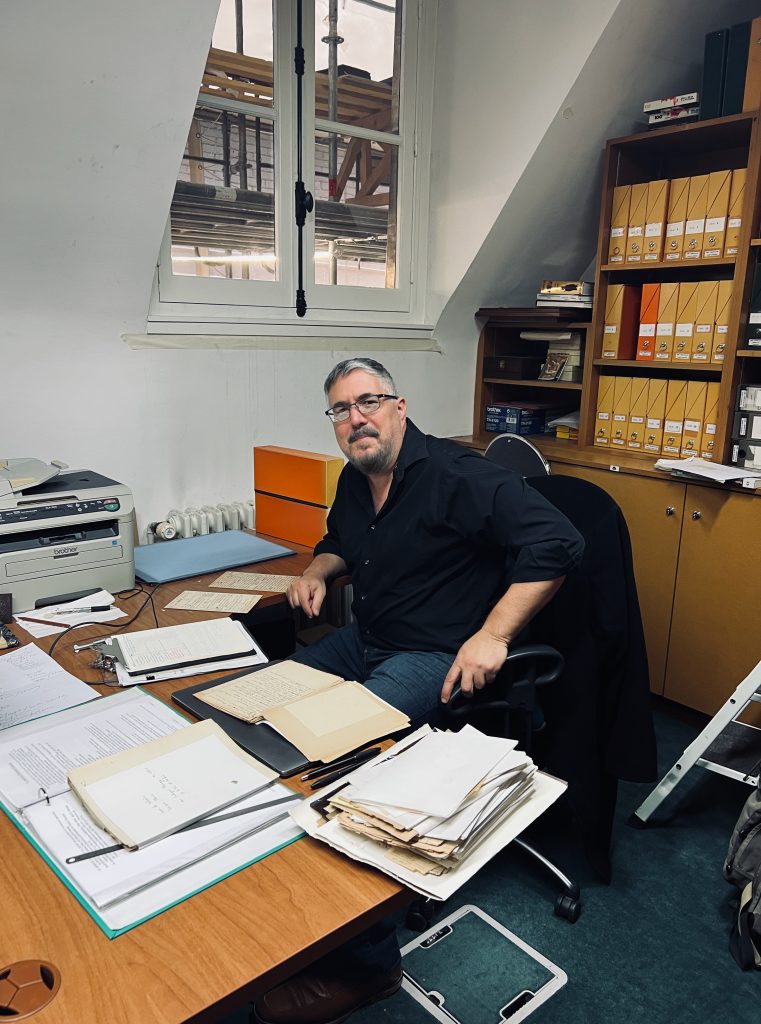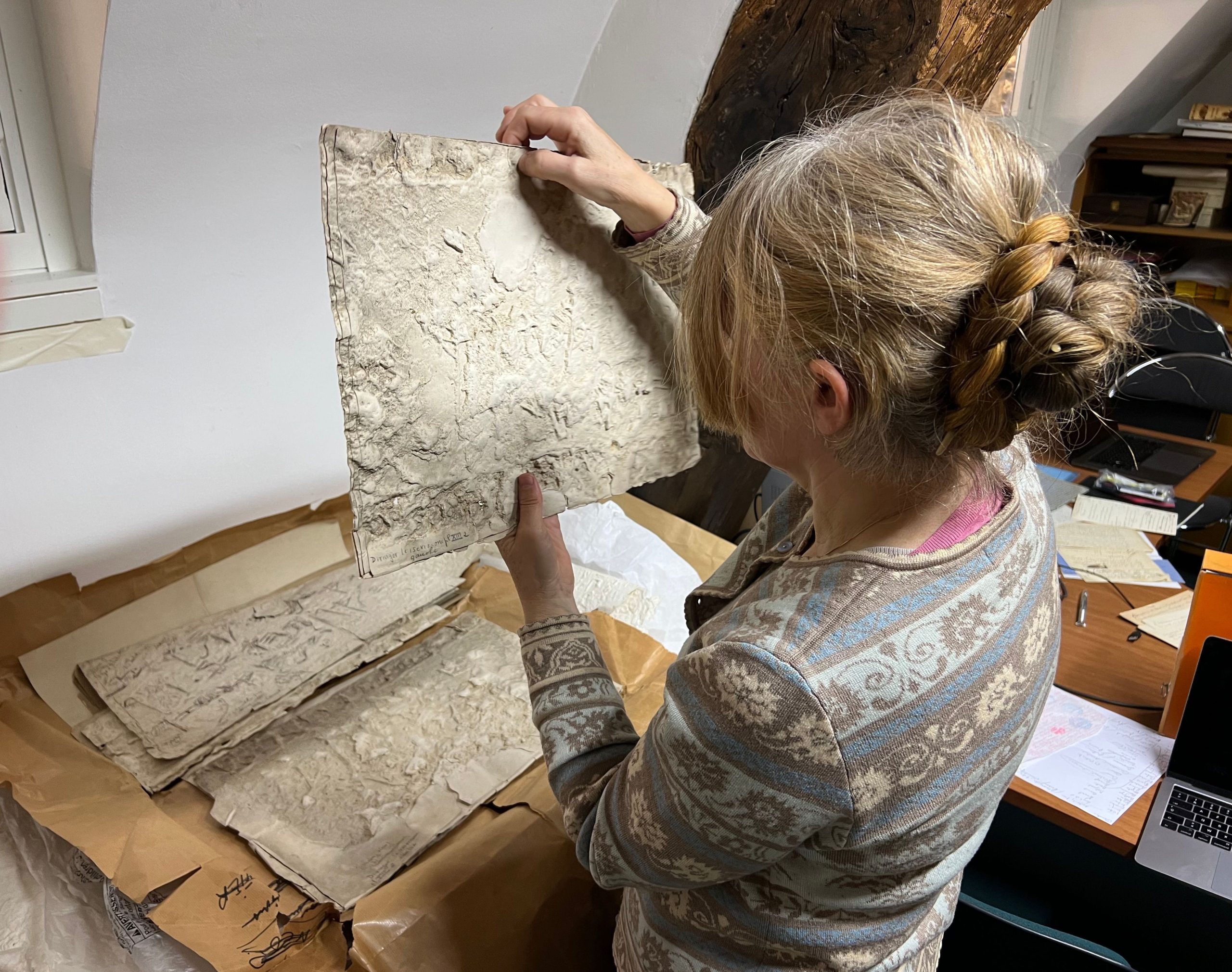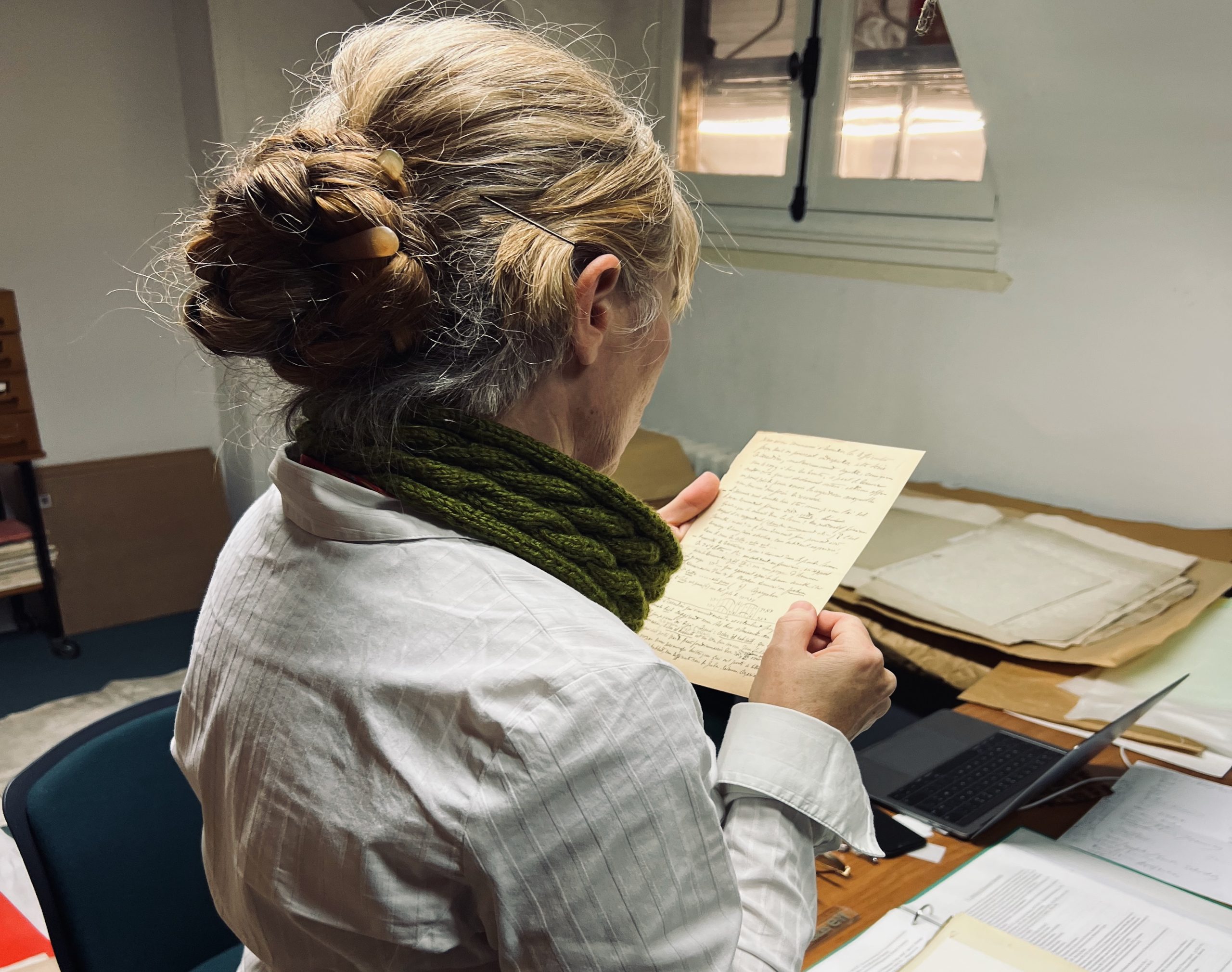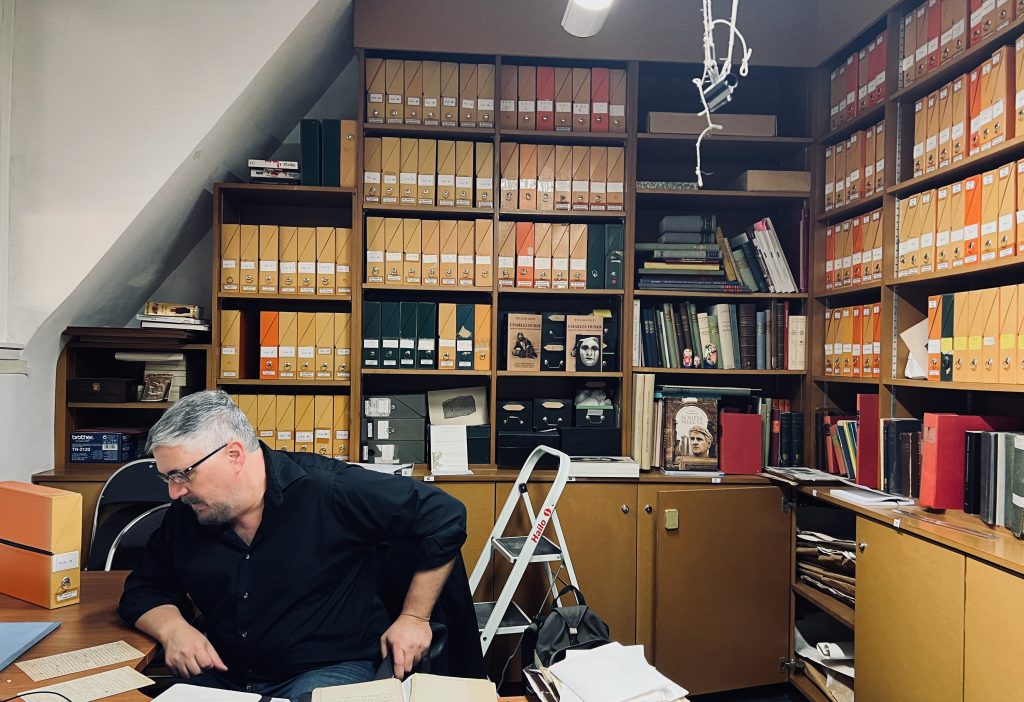
2022 Study of Collections Fellowship Report: The Unpublished Materials of Charles Clermont-Ganneau
Matthew J. Suriano, University of Maryland
Through the support of the Collections Fellowship I was able to spend several days in Paris working at the Institut de France in the Académie des inscriptions et belles-lettres (AIBL). There, I studied the unpublished materials of Charles Clermont-Ganneau that are in the Cabinet du Corpus Inscriptionum Semiticarum (CIS). Access to this collection was granted by the kind permission of Christian Robin, the AIBL’s director. In Paris, I worked with Maria Gorea, the director of the Cabinet du CIS, where I benefited from her knowledge of Clermont-Ganneau and her ability to decipher his difficult handwriting. Dr. Gorea and her student Noémie Carpentier also were of great assistance with French technical terms that I came across in Clermont-Ganneau’s writings.



The research is part of my larger project on the Hebrew funerary inscriptions from Silwan, which include the Royal Steward Inscription. That inscription together with a shorter inscription were first documented by Clermont-Ganneau in Silwan in 1870. He eventually purchased them for the British Museum, where they reside today. This summer in London I was able to study Clermont-Ganneau’s correspondence with the British Museum in the museum’s archives. My work in Paris, supported by the ASOR Collections Fellowship, continued my investigation into the acquisition of the artifacts. Clermont-Ganneau’s papers in the Cabinet du CIS shed important light on two aspects involving the Hebrew epigraphic sources. First his papers describe the French diplomat / archaeologist’s efforts to buy the inscriptions from the Arab homeowner in Silwan, including details on how the inscriptions were extracted. Much of this information was left out of his 1899 published account of his discovery. Second, his notes, drawings, squeezes and casts (plaster and papier-mâché) reveal the extent of his work to translate the inscriptions, as well as his plans –ultimately unfilled– plans to publish them.

Access to Clermont-Ganneau’s papers was critical for my project, which seeks to publish the first comprehensive edition of the funerary inscriptions from Silwan. My collections study in Paris will allow me to write a chapter on the history of research that provides insight into the events that led to the acquisition of a famous Hebrew artifact from Jerusalem that is today prominently displayed in the British Museum.
Interested in applying for a 2023 Study of Collections Fellowship? The deadline is February 28.
Learn more about applying here.
American Society of Overseas Research
The James F. Strange Center
209 Commerce Street
Alexandria, VA 22314
E-mail: info@asor.org
© 2023 ASOR
All rights reserved.
Images licensed under a Creative Commons Attribution-NonCommercial-ShareAlike 4.0 International License
COVID-19 Update: Please consider making payments or gifts on our secure Online Portal. Please e-mail info@asor.org if you have questions or need help.